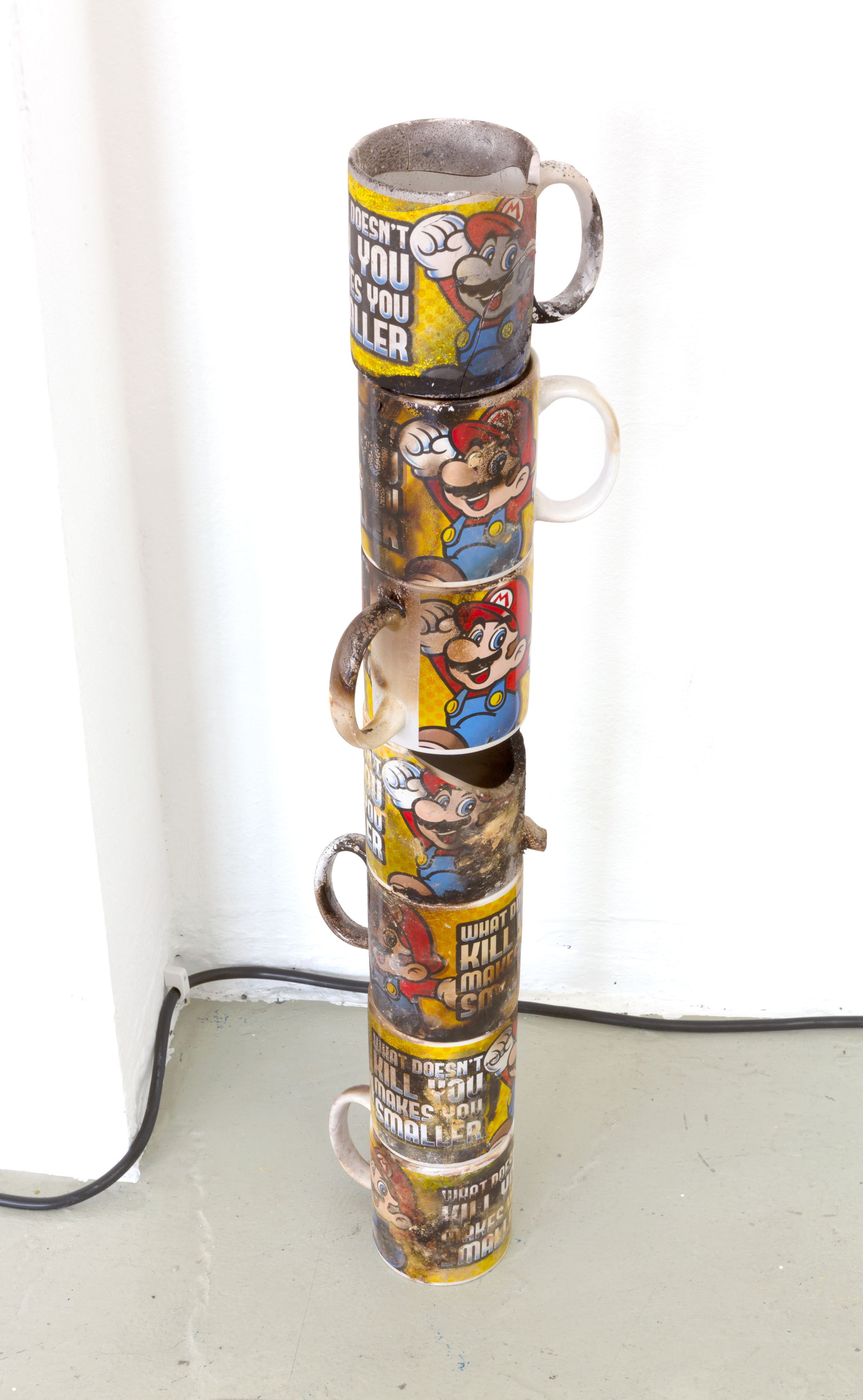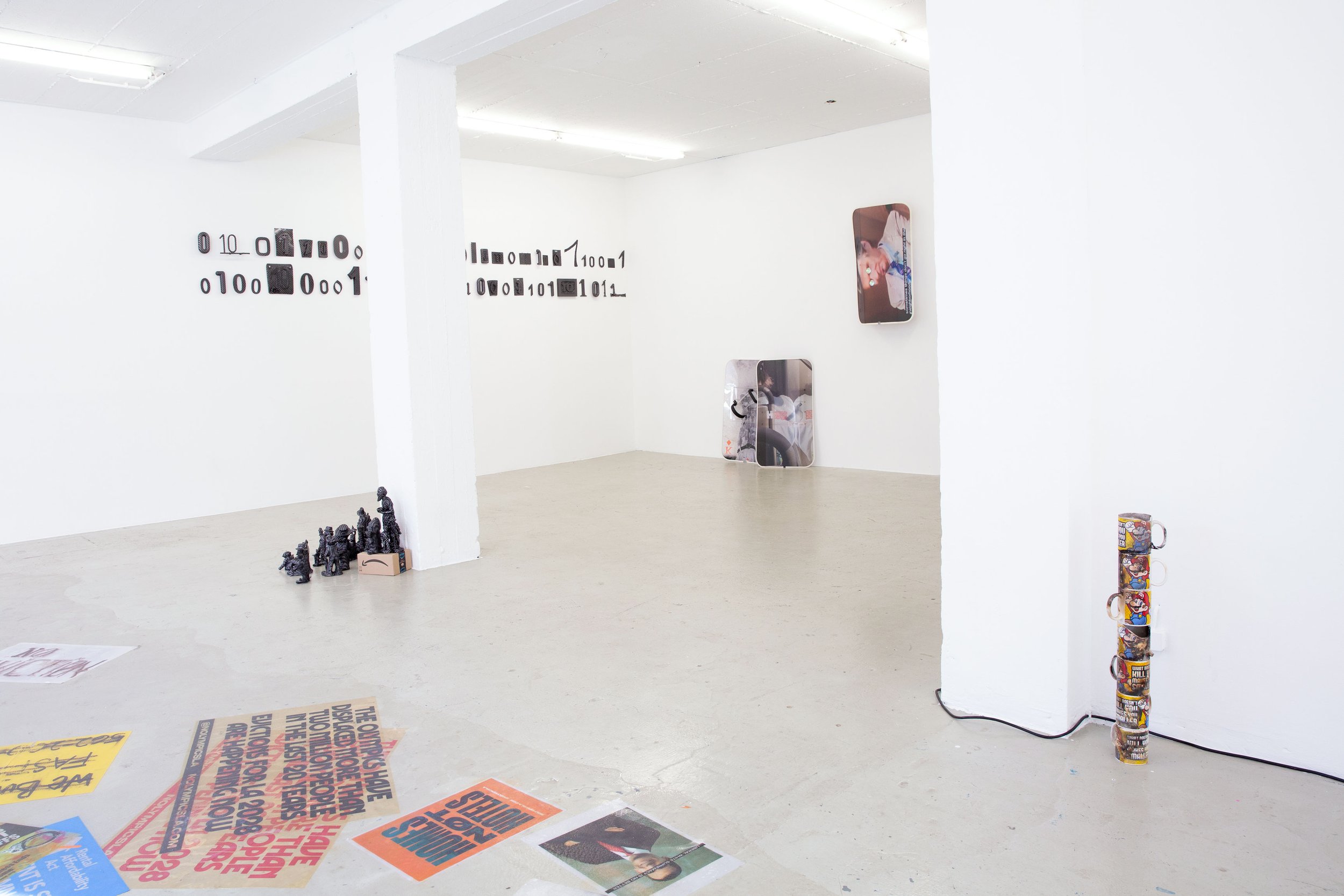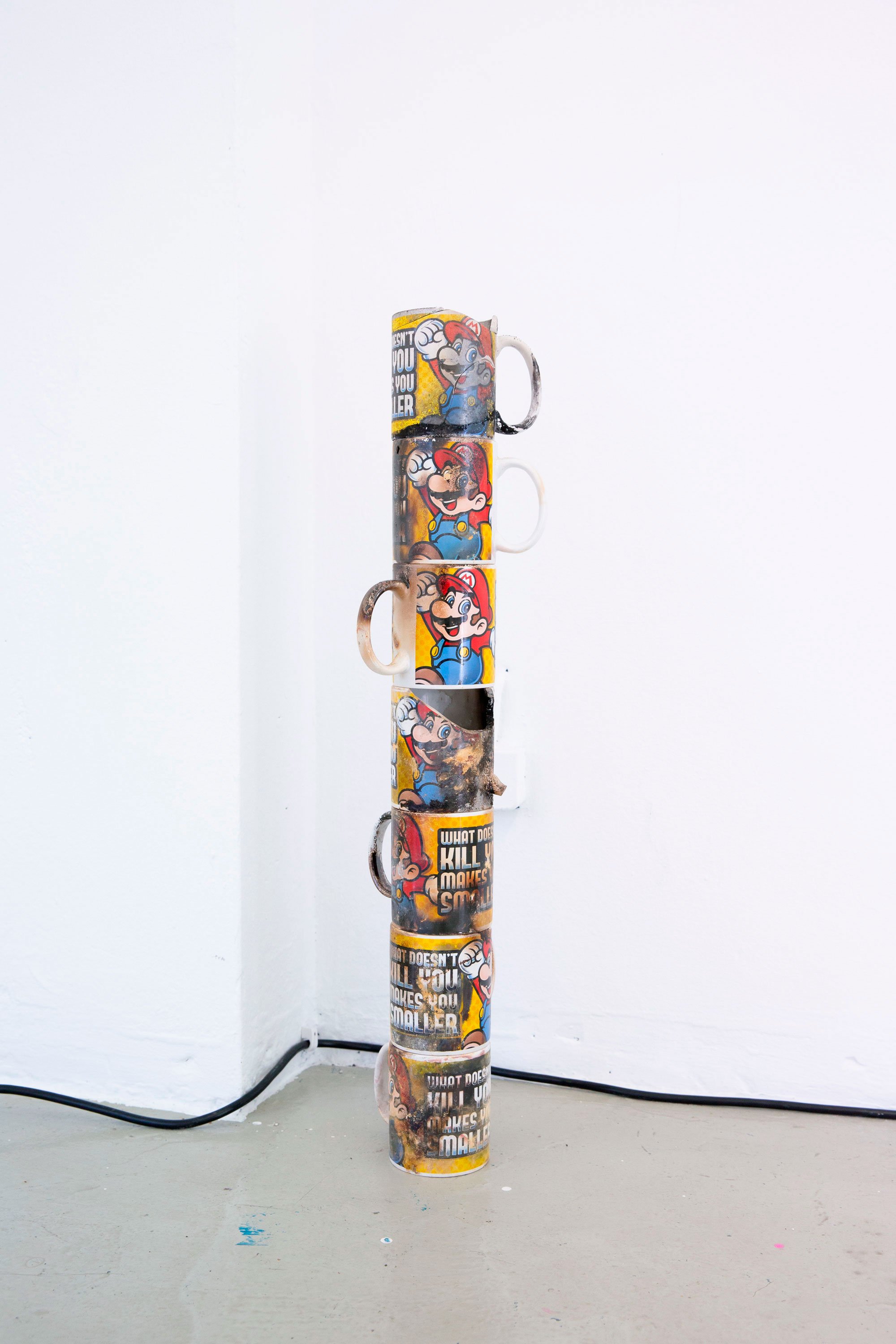A star too far, 2021
Burnt cups, 67 × 13 × 13 cm / and their eyes became sharper
Seven stacked coffee cups repeat the inscription 'What doesn't kill you makes you smaller', also seven times.
A star too far also features the Nintendo character Mario, the mustachioed, somewhat small and round protagonist and eponymous hero of the successful video game series 'Super Mario'. As someone gamers all over the world can identify with and who could also live in our neighborhood, because he is an Italian plumber, he fights his way through the Super Mario game worlds, always having to fight for his survival.
The structure of the A star too far tower, made of serially produced industrial ceramics, is fragile, damaged and littered with burn marks and ash residue. In analogy to the cup motif, A star too far illuminates the unstable construct of prevailing working, wage, and thus living conditions, which in our world is pervaded by phenomena such as overemployment, interchangeability, and the replaceability of workers and people. For many people it is a physical and psychological balancing act to have to work several jobs up to seven days a week, which can often lead to burn-out syndrome due to the "faster, higher, further" nature of our meritocracy.
The object of the coffee cup also symbolically embodies the consistent gesture of taking a break from an activity and work.
A star too far uses the visual language of cult(-ural) figures and everyday objects as a subversive device, conveying narratives about our multilayered and deformed world alongside a serious message.
And so the worlds mix with each other again each time the game begins: if Mario touches a star while jumping up, he becomes invulnerable for a certain time, offering the player both escape and opportunity.
A star too far tells of distances: the attainability or inaccessibility of goals and things, of heaviness and lightness, of dreams and nightmares, of transience and of what remains, of chaos and order.
One of the cups used here in A star too far comes from an approximately 3.2 m² burned wooden living box for the homeless, which I found in its charred state in Cologne one day during my research. It gave me the occasion for burning more cups and at the same time became part of this work.




Photo: Tamara Lorenz, liebschuh, Selma Gültoprak
Installation view: Martinetz, 2021